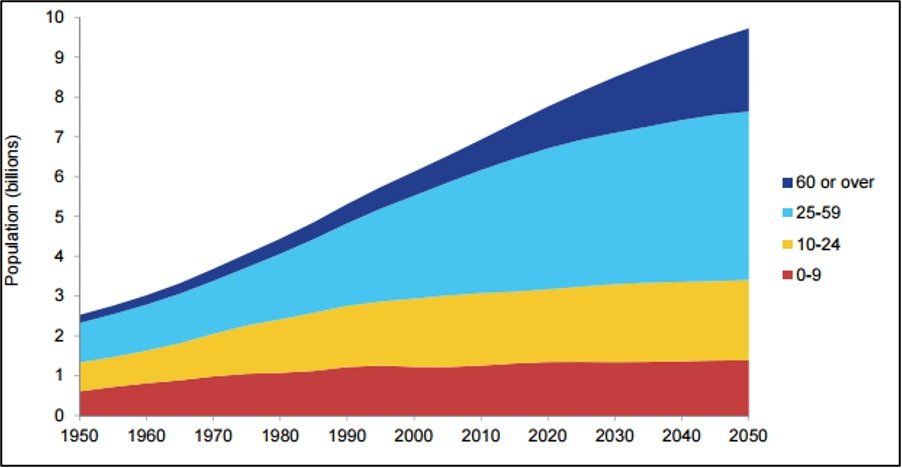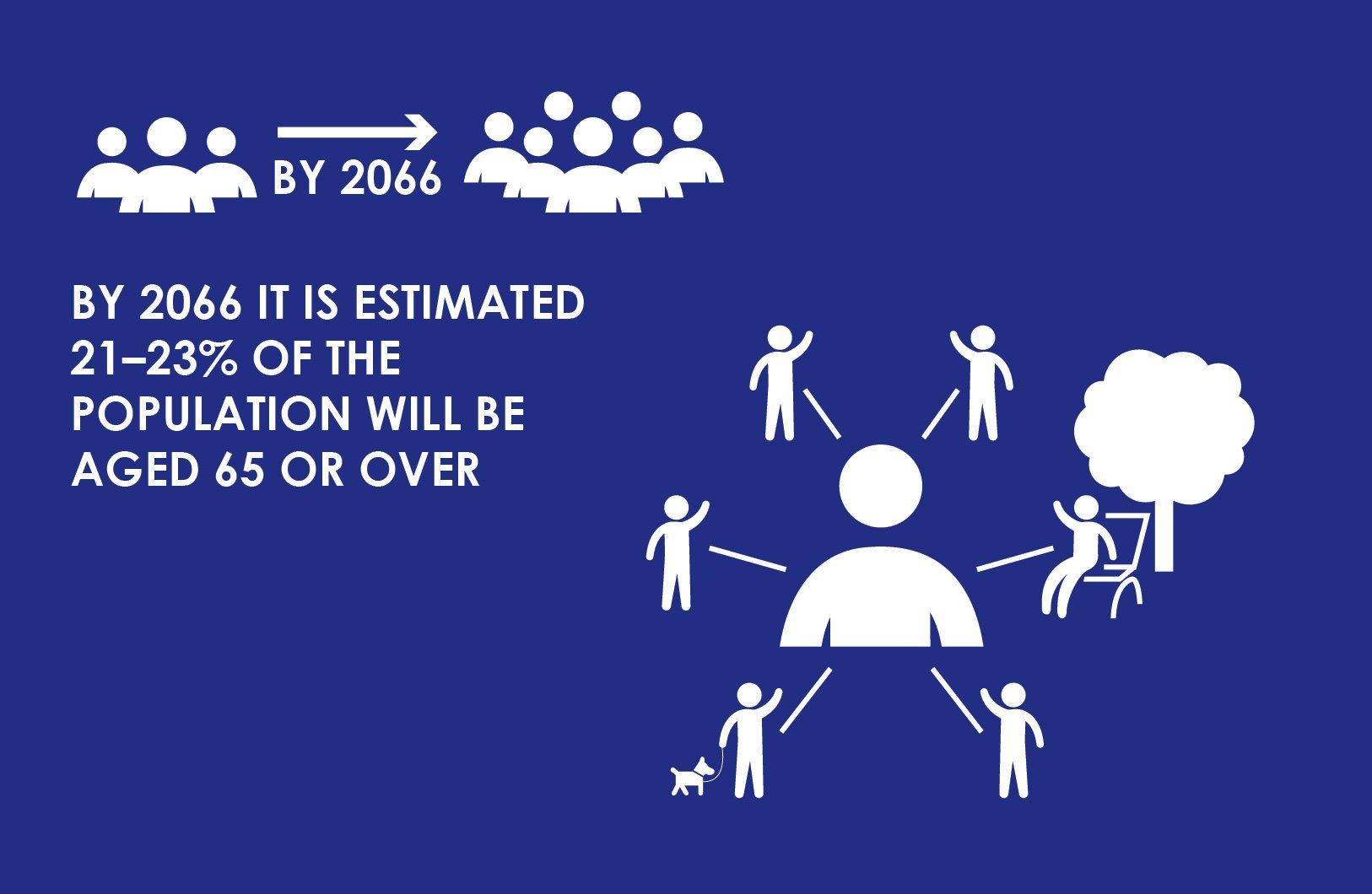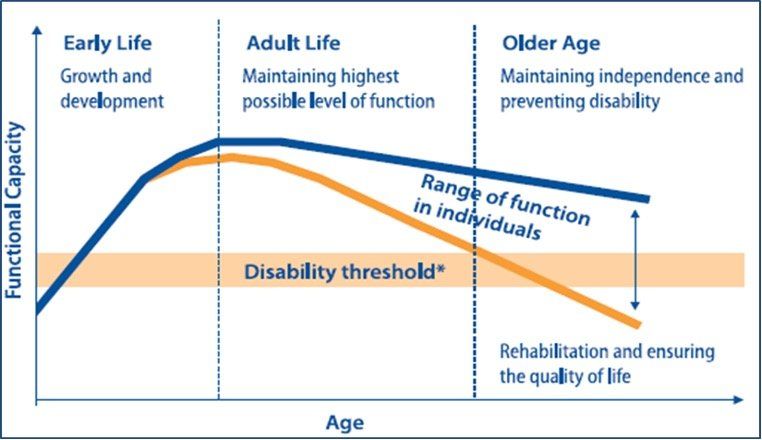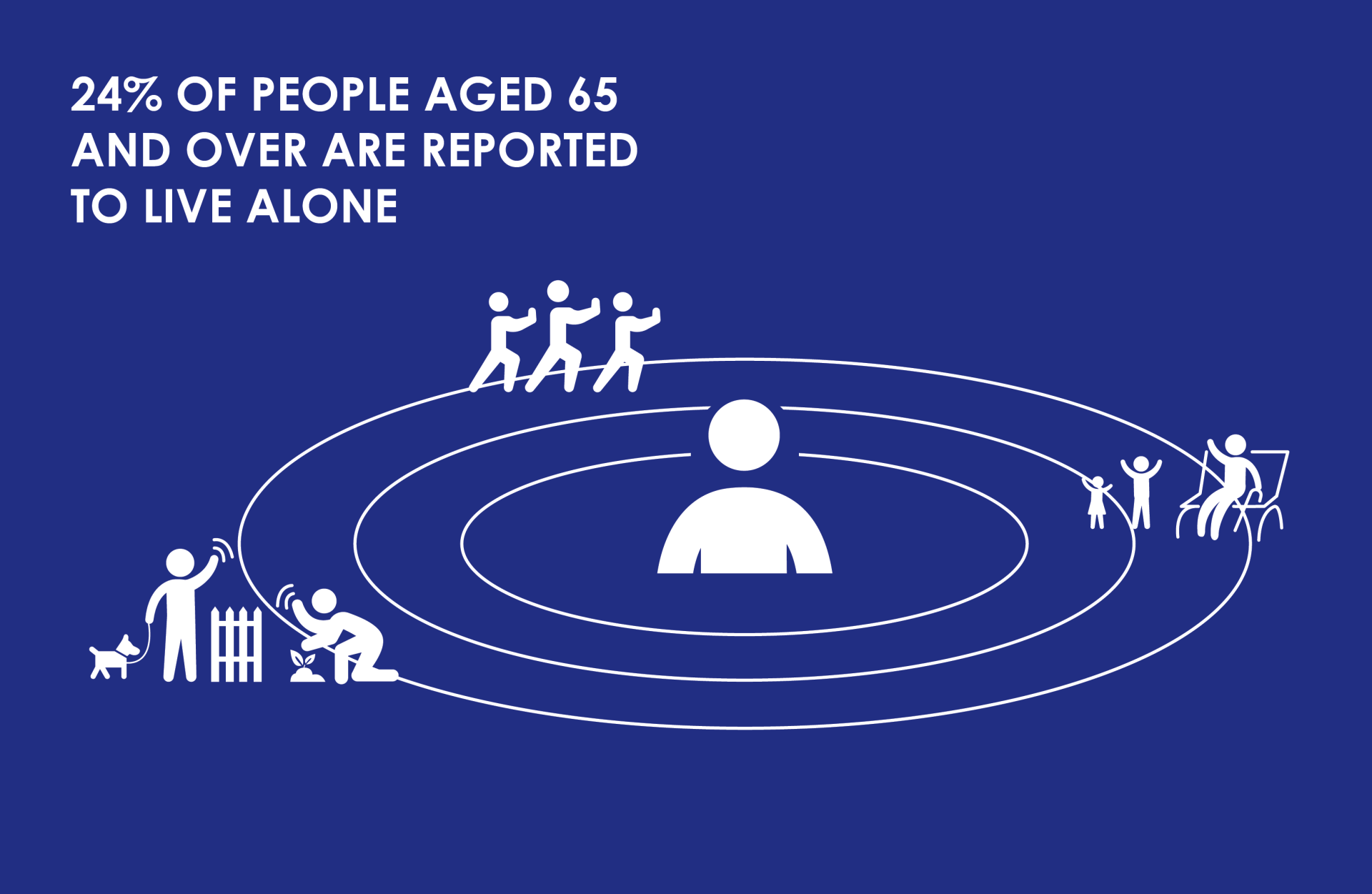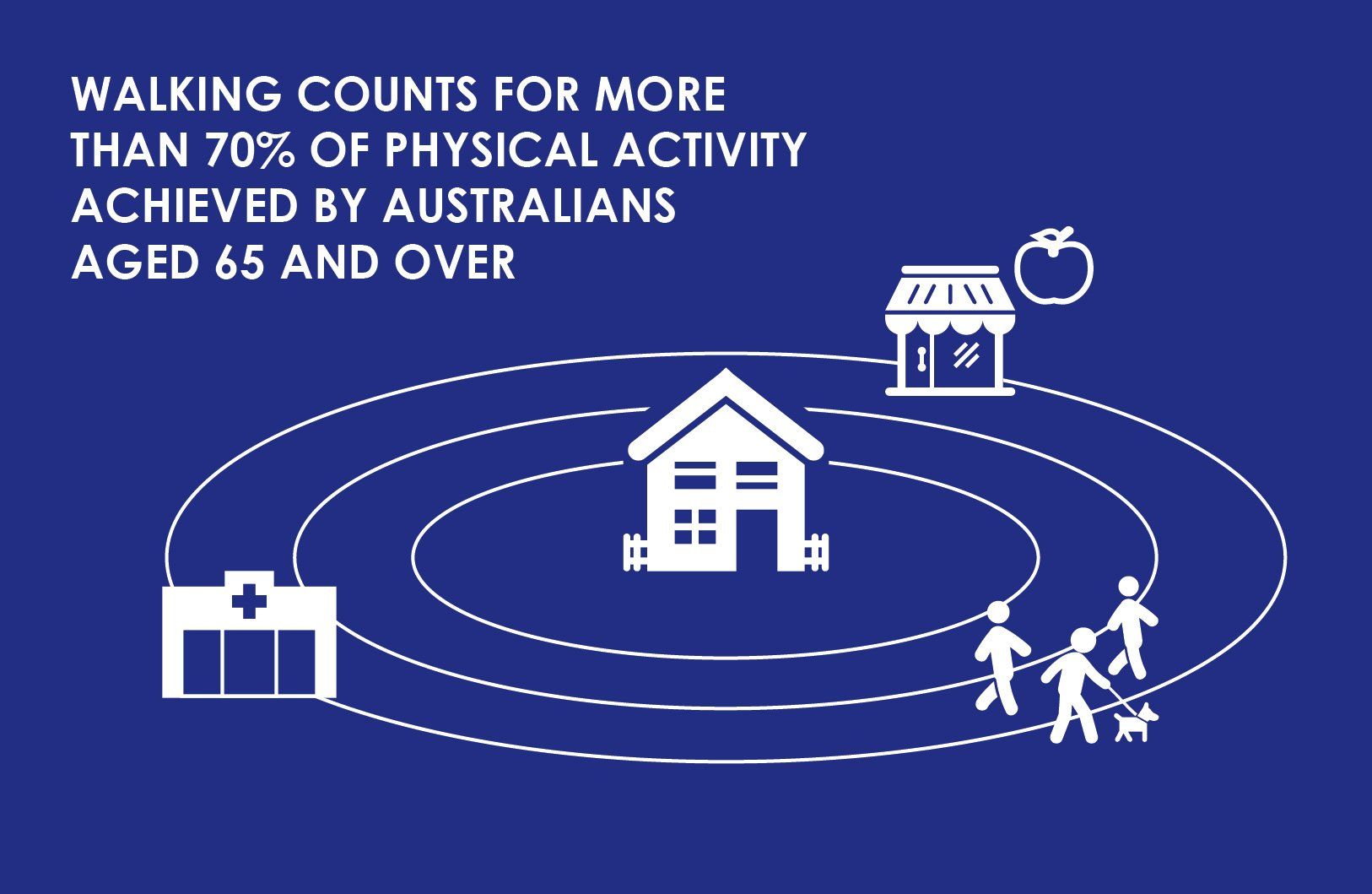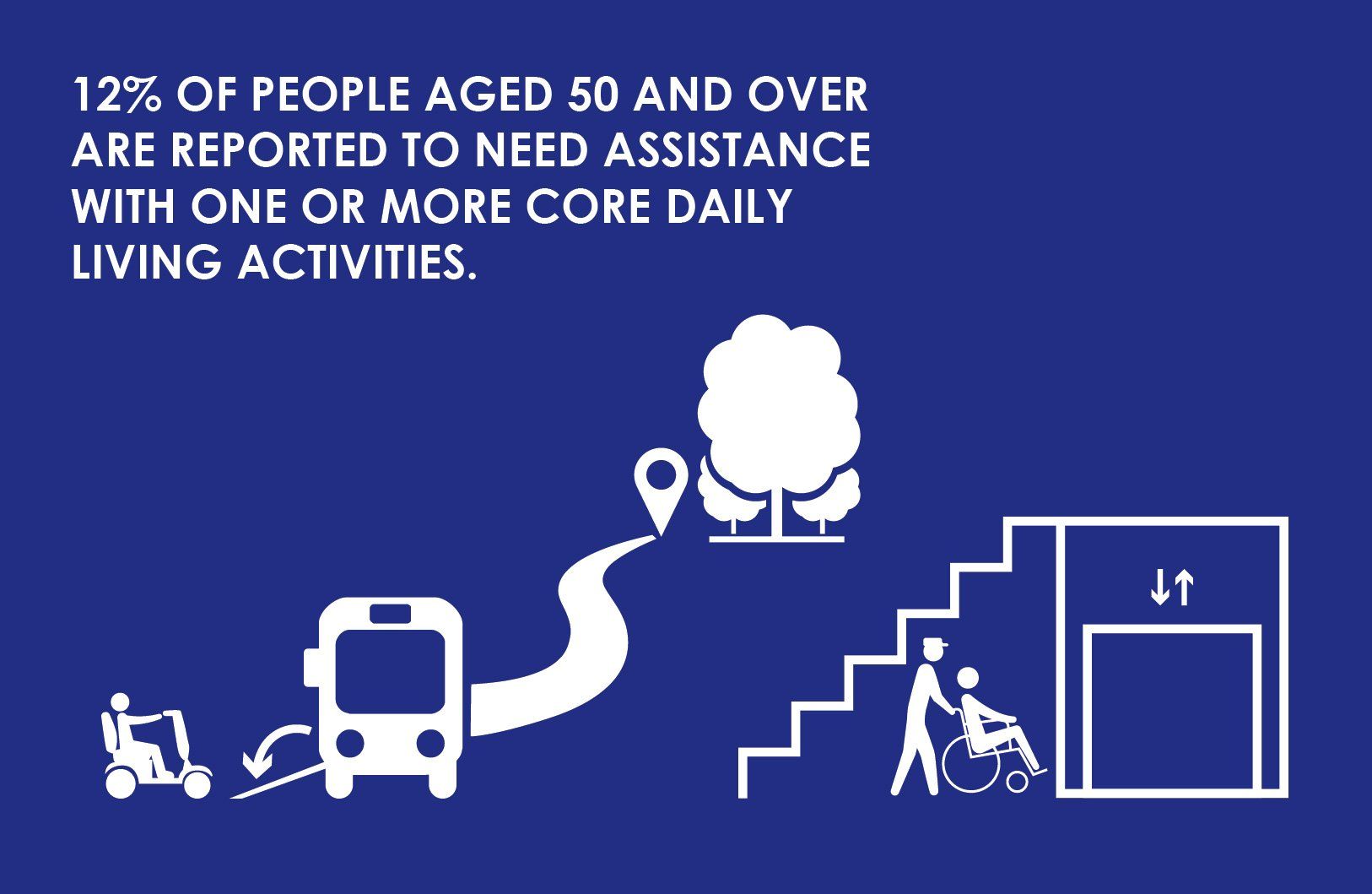Health Impact
Global population ageing: Why we need to address ageing
Globally, the number of people over the age of 60 is growing faster than the numbers of people in other age groups. Consequently, the share of older people in the total population is increasing [107]. Given this accelerated pace of population ageing, it is forecast that, by 2050, 44 per cent of the world's population will live in relatively aged countries (where at least 20 per cent of the population is over 60 years). Additionally, 25 per cent will live in a country where more than 30 per cent of the population is older than 60 years [107]. By 2050, it is predicted that there will be 2.1 billion people over the age of 60; this is double the number in 2015 (Figure 2).
Australia’s ageing population
Australia has a population of 24.5 million people and, like most developed countries, its population is ageing because of sustained low fertility and increasing life expectancy [6]. This has implications for the age structure, leading to a decline in the proportion people aged under 15 years and a relative increase in the proportion of people over 65 years. The ageing of the population is reflected in the increase in the median age, which is projected to rise from 37.3 years in 2012, to between 42.5 and 46 years in 2061 [5]. The proportion of the population over the age of 65 is projected to increase rapidly over the next decades as the Baby Boomers age [6].
By 2066 it is estimated 21–23% of the population will be aged 65 or over.
1. Healthy Active Ageing: a whole of life-course approach
While Healthy Active Ageing incorporates a focus on older adults, it also encompasses a whole of lifespan approach. This lifespan approach is critical to improving broader public awareness about the importance of physical activity at all ages to support healthy ageing. How we treat our bodies in our youth has an impact on how healthy we will be in older age.
This understanding of ageing informs current policy interventions designed to help maintain wellness and independence for older people worldwide [117]. It is built on the notion that an individual’s functional capacity declines by varying degrees over the entire life course, but increasingly in older age. This decline in functional capacity can be reduced or arrested through a range of interventions to promote function and maintain mobility and independence, including maintaining optimum levels of physical activity (Figure 3). The range of interventions includes: promoting long-term health awareness; adopting community-based approaches to healthy ageing; recognising cultural and gendered differences in how ageing is experienced; strengthening intergenerational links; approaching ageing as relevant to the whole of the life course; and designing physical and built environments that facilitate both the physical activity and social engagement required to support the highest possible quality of life for older people, in particular walkability. [117].
2. Healthy Active Ageing: the critical importance of physical activity across the life course
Physical activity is critical to maintaining people's quality of life as they age. Motivating people to be physically active as they age requires appropriate environmental and social support, including, in particular, walkable communities and accessible outdoor spaces that enable social engagement.
“Walking is a simple health behaviour that can reduce rates of chronic disease and ameliorate rising health care costs, with only a modest increase in the number of activity-related injuries” [63].
2.1 Physical activity and older adults: Best practice and key support mechanisms
There is strong evidence that older adults who are physically active have better health outcomes in comparison to sedentary older adults [114] [118].
In adults aged 65 years and above, physical activity includes leisure time physical activity (walking, dancing, gardening, hiking, swimming), transportation (walking or cycling) and occupational (if the individual is still engaged in work). It also includes household chores, play, games, sports or planned exercise, in the context of daily, family and community activities.
Current understandings of best practice and support mechanisms for physical activity and ageing have developed out of WHO Active Ageing Policy [117]. The Heart Foundation’s Blueprint for an Active Australia (2019) recognises the critical role that physical activity plays on the health and wellbeing of older adults and makes recommendations regarding the built and social environment [104].
3. Healthy Active Ageing: The role of social engagement
While physical activity is a crucial component to Healthy Active Ageing, it is imperative to recognise that older people’s engagement in physical activity is shaped by the social, cultural, political and environmental contexts at the local, national and global levels. Focusing on increasing physical activity without due regard to the broader contextual factors is likely to be less impactful in the long-term. While older people are likely to understand the benefits of increased physical activity, the motivation needed to commit to sustained, regular exercise often depends on associated social-relational benefits, like making friends and feeling a sense of belonging to a community, as well having safe, appropriate and accessible environments to exercise in [30] [32] [33] [38] [44] [50] [53].
Social isolation and loneliness are particularly problematic in old age, due to decreasing economic and social resources, functional limitations, the death of relatives and spouses and friends, changes in family structures and mobility [32], and cultural barriers [77].
Healthy Active Ageing responds to the impact of loneliness and isolation on rates of physical activity by facilitating environments that feature social engagement.
Undertaking group physical activity with others from your social network, or joining a physical activity group with new members, has been reported to positively influence physical activity behaviours, while providing motivational and emotional support and addressing social isolation [26] [30]. Environmental characteristics and walkability can either promote or deter social and physical activity.
4. Health Active Ageing: Creating Enabling Environments
Environments are the contexts in which people live their lives. Environments that are age-friendly help to foster Healthy Ageing in two ways: by supporting the building and maintenance of intrinsic capacity across the life course, and by enabling greater functional ability so that people with varying levels of capacity can do the things they value [120].
Research shows sustaining regular increased physical activity among older adults requires two key support mechanisms: (1) access to safe, affordable and appropriate spaces and places and (2) social-relational factors, like a sense of belonging and friendships.
There is growing evidence that older people’s participation in physical activity, in particular walking, is associated with the environment in which they live [42] [90]. For older people in the community, a prominent barrier to remaining active is a reduced sense of safety when moving through the built environment. This reduced sense of safety may relate to trip hazards from a poorly maintained path, being forced to share a path with cyclists that are moving too fast or merely a lack of universally accessible routes between the destinations that they need to, or wish to, visit. Perceptions of crime and safety also affect older people's participation in physical activity [105].
More broadly, Healthy Active Ageing can be supported by creating interconnected movement networks, including modifications to public transport (such as buses), training of staff to understand the needs of older people and providing slow-moving environments [74]. A consolidated built environment enables older people to continue to access healthy food, diverse housing options, and destinations, such as medical and social services [3].
Amini-Behbahani, P., Meng, L. and Gu, N., 2020. Walking distances from services and destinations for residential aged-care centres in Australian cities. Journal of Transport Geography, volume 85, May 2020
Walking counts for more than 70% of Physical Activity achieved by Australians aged 65 and over.
Importantly, a Healthy Active Ageing population is underpinned by access to enabling environments and social networks [2] [31]. It is the connections between people that enhance the willingness for people to remain active throughout their lives. The built environment, programs and project initiatives need to be designed to include social interactions to complement the best possible health outcomes.
Planning and design play a crucial role in creating environments that support older adults' physical activity and well-being [99]. Healthy Active Ageing principles should inform urban planning across scales, from metropolitan planning, which shapes the transport grid and urban land use mix, down to the local, which guides the design of neighbourhoods and houses. Likewise, cross-sectoral engagement is required, since no sector alone can foster the functional ability of older people [120]. For example, helping older people to remain active and mobile is influenced directly by sectors responsible for transport, urban planning, housing, information, health and social welfare. Using an ageing lens in planning can help create age-friendly communities, not just for the elderly but for the whole of the community [59].
The World Health Organisation (WHO) Age-friendly Cities and Communities approach [60] is a globally recognised method for developing appropriate policy and practice responses to support healthy ageing in the community, tailored to local conditions that are based on bottom-up participatory community consultation that supports ageing in place [56].
The age-friendly approach entails ‘bottom-up’ participatory consultation that can inform planning to deliver improved outcomes for older adults living in the community. Active ageing formed the basis for the WHO’s ‘Global Age-Friendly Cities’ project, launched in 2006. Understanding age-friendly communities to be inclusive and accessible urban environments that promote active ageing, the project offered a checklist of city features that influence the health and quality of life of older people in cities [116]. These were grouped around eight key domains: outdoor spaces and buildings, transport, housing, social participation, respect and social inclusion, civic participation and employment, communication and information, and community support and health services (Refer to Figure 4). Although much of this research is centred on cities and urban environments, it is important to note that many age-friendly planning principles are equally relevant to people living in regional, rural and remote areas.
A built environment that supports Healthy Active Ageing enables older people to safely and confidently navigate the built environment to support independence, nurture social connections and remain physically active. Research indicates that combining social activities with physical activity will result in more frequent and sustained participation, a greater sense of belonging and improved health outcomes [3]. Providing an environment that will support safe and convenient walking is one of the critical design elements that a Healthy Active Ageing built environment can provide.
Built environment professionals, such as town planners and urban designers, can complement the efforts of health professionals by providing a supportive built environment for Healthy Active Ageing. Governments at all levels can adopt an age-friendly approach to decision making. By advocating for a built environment that includes safe, universally accessible and well-maintained paths, segregated footpaths and cycle paths and a compact built environment, it ensures that the health and wellbeing of older people will be enhanced.
Based on the WHO determinants of age-friendly cities, a Healthy Active Ageing built environment includes eight interconnected domains of urban life.
Next Page
Stay informed. Sign up to our newsletter.
I agree that I have read and I accept the Heart Foundation's Privacy Statement.

